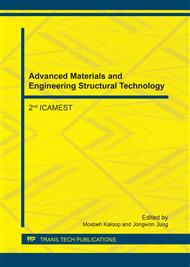p.54
p.59
p.65
p.71
p.78
p.84
p.89
p.94
p.100
Surface Improvement of TiO2 Nanotube Arrays for Dental Implant
Abstract:
Highly ordered TiO2 nanotube arrays are very attractive to the dental implant due to microstructural advantage for drug loading. We have fabricated the highly ordered TiO2 nanotube arrays on the surface of the dental implant. The surface of TiO2 nanotube arrays grown by normal anodic oxidation was not clean and the window of TiO2 nanotube was closed. These closed nanotubes decrease the surface area to load the drug and also decrease the osseointegration performances. To obtain the clean surface of TiO2 nanotube arrays, two-step anodic oxidation was used. The microstructures of TiO2 nanotube arrays from two-step anodic oxidation were compared with those from normal anodic oxidation. The length and diameter of TiO2 nanotube arrays with anodizing time were measured. TiO2 nanotube arrays grown by two-step anodic oxidation had the clean surface and the diameter of TiO2 nanotubes was ~100 nm at anodizing conditions of 60V and 20 min. It was applied to the surface of dental implant to improve the osseointegration. The improved osseointegration was observed by micro CT analysis. TiO2 nanotube arrays had a promising microstructure to load some drugs such as BMP-2 and anti-inflammatory.
Info:
Periodical:
Pages:
78-83
Citation:
Online since:
April 2017
Authors:
Price:
Сopyright:
© 2017 Trans Tech Publications Ltd. All Rights Reserved
Share:
Citation:


